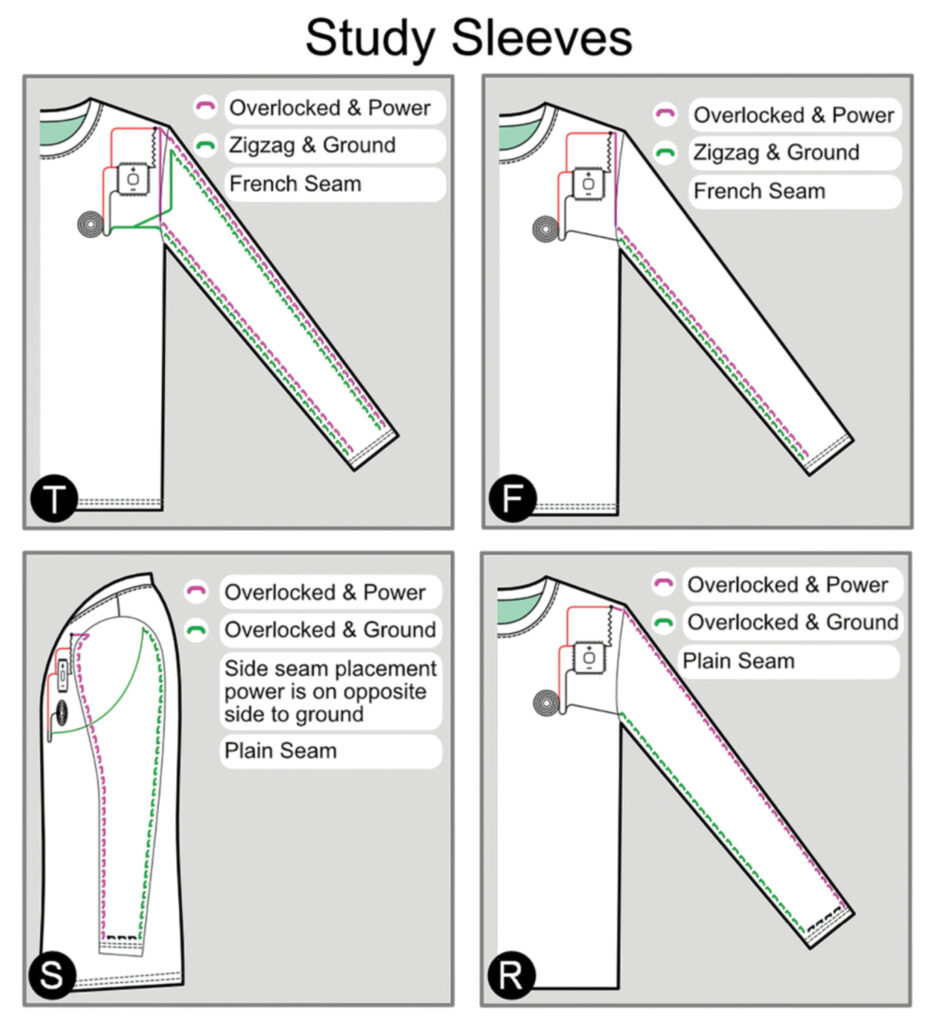
Instead of incorporating sensors into woven fabric panels or knitting them in, e-textile researchers at the University of Bath and the University of Bristol in England studied the use of a garment’s seams—particularly in the sleeves—for the incorporation of sensors.
“This paves the way for exciting future remote physiotherapy and exercise monitoring applications,” says Adwait Sharma, Ph.D., of the University of Bath.
In its study, the team looked at optimal seam design and placement through different types of seams and demonstrated success in classifying eight arm exercises. The researchers found that French seams offered a dual conductive channel but didn’t capture all aspects of arm movement. They also concluded that a plain seam should align with the joint to maximize its abilities.
“We’ve shown that common overlocked seams in standard garment constructions can do a good job of sensing movement,” says professor Mike Fraser of the University of Bristol’s School of Computer Science. “The design avoids the need for a separate power source by pairing the seam with a charging coil, drawing the energy wirelessly from a mobile phone placed in the pocket.”
He continues, “This means advanced motion-sensing garments could be made without altering existing manufacturing processes.”
The research was published by the Association for Computing Machinery for the Designing Interactive Systems Conference in July 2024 at the IT University of Copenhagen, Denmark.
 TEXTILES.ORG
TEXTILES.ORG


